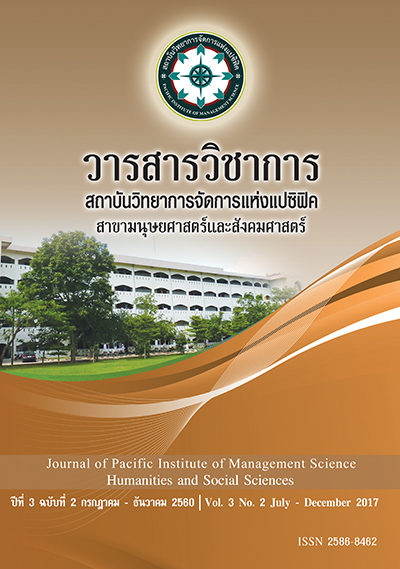Learning Organization Strategy Development : Rajabhat University; Rattanakosin Group
Keywords:
Components and learning factors, learning gaps, learning organization strategy development, higher education institution (HEI), Rajaphat University (Rattanakosin Group)Abstract
This research aims to develop the learning organization strategy of the Thailand Higher Education Institution (HEI). Grounded on the key conceptual ideas on key components and important learning factors, the learning strategy was develop as a learning mechanism for the organization in moving towards the 21st century development. By using Rajabhat University Rattanakosin Group; Thailand, as a unit of study, the study method is designed to analyze the organization’s learning gaps under the present situations and the need of organization on the future key important learning factors. The study’s results stated that, under the social dynamic of change the organization learning strategy should be concentrated on organization values with their core identities creations. Specially, in order to reduce their learning gaps, they need to co-evolve their key innovative learning disciplines with other organizations and social key related agencies.
References
Cameron, K. S., & Quinn, R. E. (1999). Diagnosing and changing organizational culture: Based on the competing values framework. Reading, Mass: Addison-Wesley.
Capra, F. (1975). The Tao of physics: An exploration of the parallels between modern physics and Eastern mysticism. Berkeley: Shambhala.
Chinowsky, P., & Carrillo, P. (2007). Knowledge Management to Learning Organization Connection. Journal of Management in Engineering, 23, 3, 122-130.
Forrester, J. W. (1968). Principles of systems: Text and workbook. Cambridge: Wright-Allen.
Hock, D. (1999). Birth of the chaordic age. San Francisco, Calif: Berrett-Koehler.
Lassey, P. (1998). Developing a learning organization. London: Kogan Page. OECD. (2009). Green at ifteen: How 15-year-olds perform in environmental science and geosciences in PISA 2006. OECD, Paris.
Marquardt, M. J. (1996). Building the Learning Organization. New York: McGraw-Hill.
Schwartz, P. (2003). Inevitable surprises: Thinking ahead in a time of turbulence. New York: Gotham Books.
Senge, P. M. (1994) “ The Fifth Discipline Fieldbook: Strategies and Tools for Building a Learning Organization, ” London: Century Business
UNESCO. (2005). UNESCO World Report: Towards knowledge societies. United Nations Educational, Scientiic and Cultural Organization. Imprimerie Corlet, Condé-sur-Noireau,France.220pp. Available at: https://unesdoc.unesco.org/images/0014/001418/141843e.pdf.
Downloads
Published
Issue
Section
License
บทความที่ได้รับการตีพิมพ์เป็นลิขสิทธิ์ของ สถาบันวิทยาการจัดการแห่งแปซิฟิค
ข้อความที่ปรากฏในบทความแต่ละเรื่องในวารสารวิชาการเล่มนี้เป็นความคิดเห็นส่วนตัวของผู้เขียนแต่ละท่านไม่เกี่ยวข้องกับสถาบันวิทยาการจัดการแห่งแปซิฟิค และคณาจารย์ท่านอื่นๆในสถาบันฯ แต่อย่างใด ความรับผิดชอบองค์ประกอบทั้งหมดของบทความแต่ละเรื่องเป็นของผู้เขียนแต่ละท่าน หากมีความผิดพลาดใดๆ ผู้เขียนแต่ละท่านจะรับผิดชอบบทความของตนเองแต่ผู้เดียว







